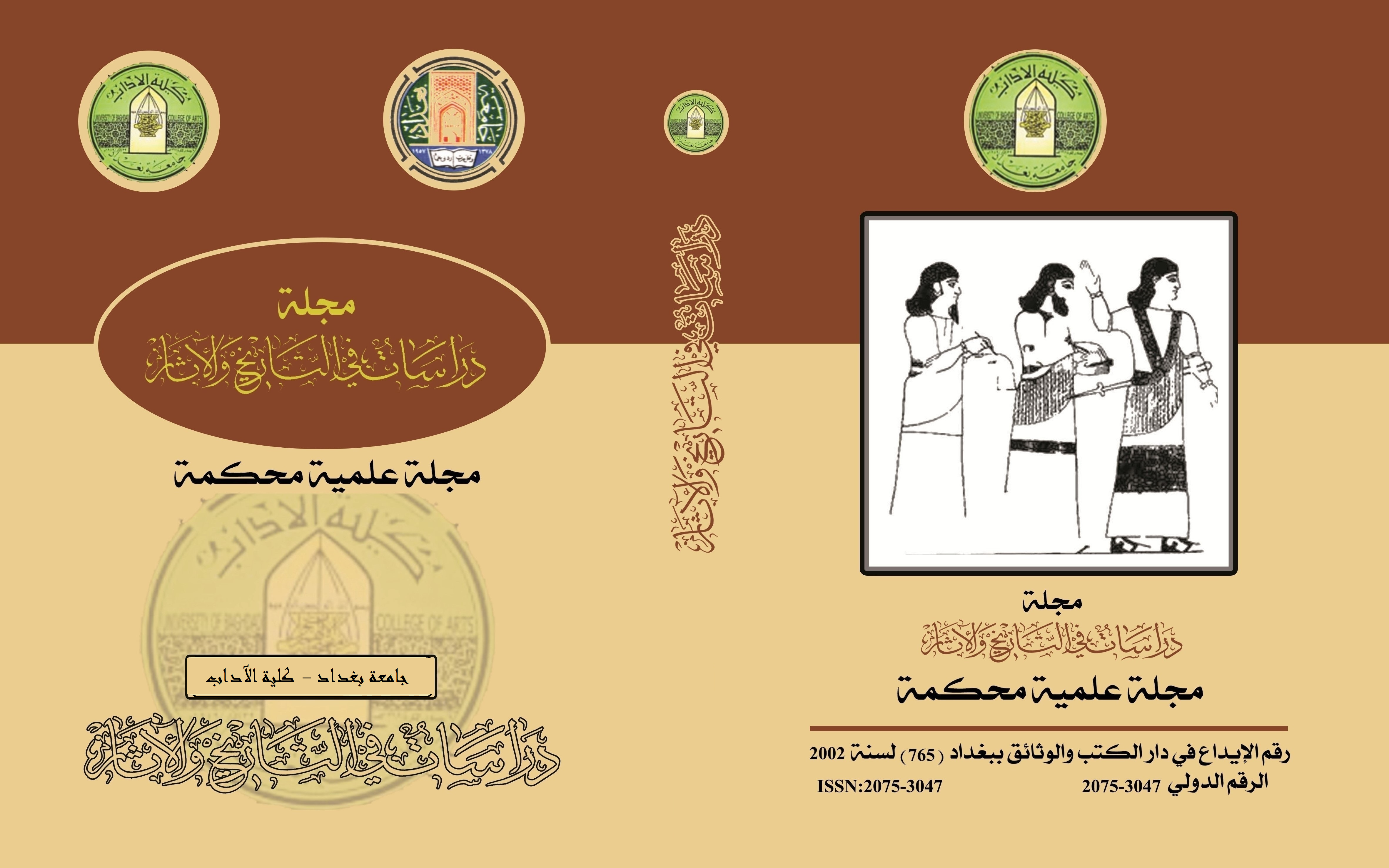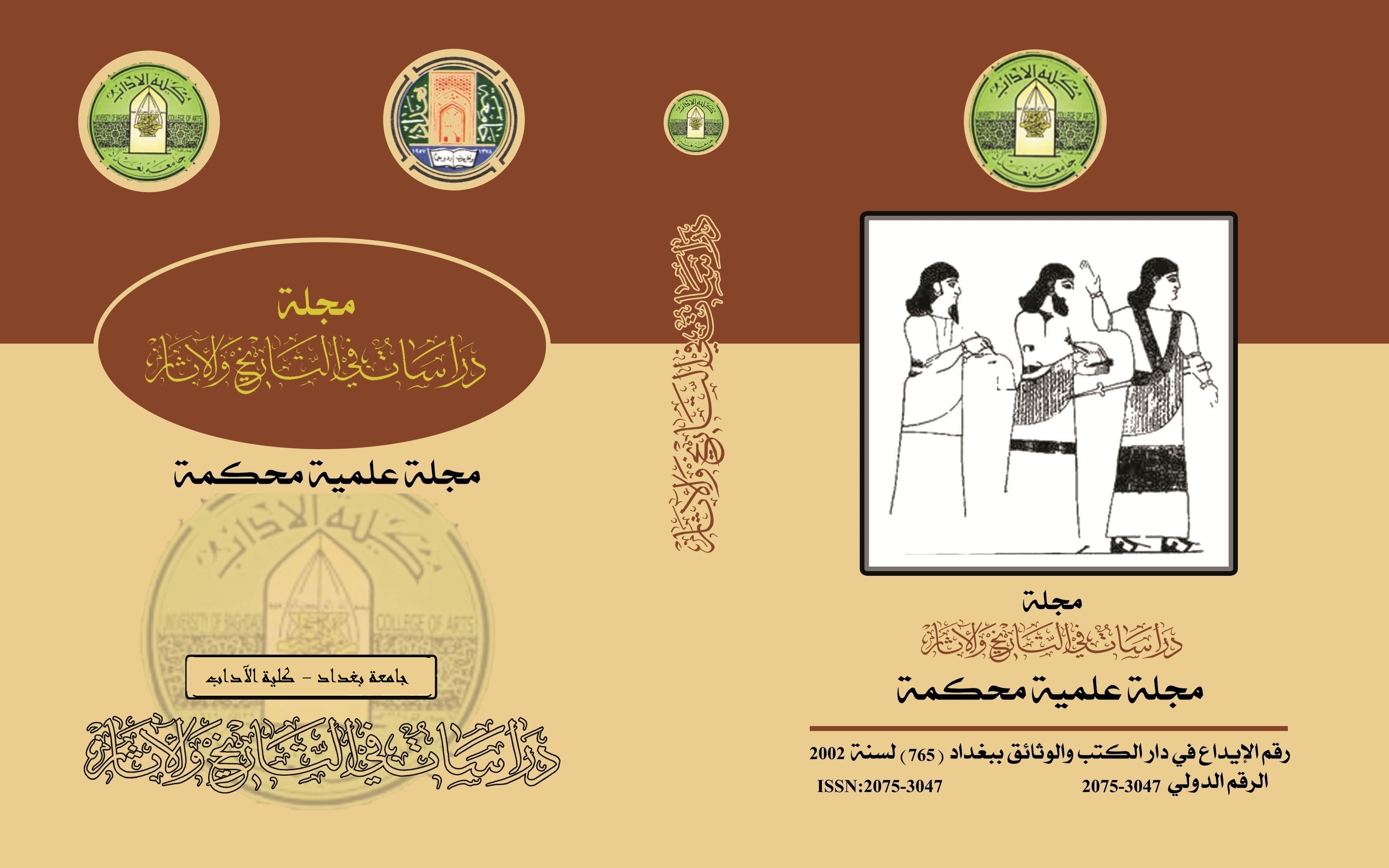الاخمينيون .. من القرية الى المدينة
DOI:
https://doi.org/10.65074/2hs3j007الكلمات المفتاحية:
الاخمينيون، تاريخ قديمالملخص
يُعدّ التحول الحضاري من الأنماط الريفية أو القبلية إلى البنى المدنية أحد أبرز مؤشرات النضج السياسي والتطور الاجتماعي الذي شهدته حضارات الشرق الأدنى القديم، وتُعدّ الإمبراطورية الأخمينية (550–330 ق.م) نموذجًا بالغ الأهمية في هذا السياق. فقد نهضت هذه الدولة، التي أسّسها كورش الكبير، من رحم تشكيلات قبلية وعشائرية كانت تستقر في الأقاليم الجبلية من جنوب غرب إيران، ونجحت خلال فترة زمنية قصيرة في إنشاء واحدة من أوسع الإمبراطوريات وأكثرها تنظيمًا في العالم القديم. وليس من المبالغة القول إن هذا التحول، من البداوة والقرية إلى المدينة والنظام، كان ركيزة أساسية في صعود الأخمينين كقوة عالمية([i]).
لقد ارتبط هذا التحول ارتباطًا عضويًا بطبيعة المشروع السياسي الأخميني، الذي لم يكن مجرد توسّع عسكري، بل كان مشروعًا لإعادة صياغة البنى الاجتماعية والإدارية والاقتصادية بما يخدم الاستقرار الإمبراطوري طويل الأمد. ولذلك، شكّلت عملية التمدين والانتقال إلى نمط الحياة الحضرية – سواء عبر إنشاء المدن أو توسيع البنى التحتية – خطوة استراتيجية لتثبيت سلطة المركز الإمبراطوري وضمان تدفق الموارد من الأطراف إلى المركز. وقد عبّر المؤرخ الفرنسي بيير بريان عن هذه الرؤية حين أشار إلى أن "المدينة في التصور الأخميني لم تكن فقط وحدة سكانية، بل كانت مركزًا للسلطة ومسرحًا لتمثيل الأيديولوجيا الملكية
المراجع
Pierre Briant, From Cyrus to Alexander: A History of the Persian Empire, Eisenbrauns, 2002, pp. 1–10).
( )(Briant, 2002, p. 267).
( )(Amélie Kuhrt, The Persian Empire: A Corpus of Sources from the Achaemenid Period, Routledge, 2007, Vol. I, pp. 132–138).
( )(Margaret Cool Root, The King and Kingship in Achaemenid Art, E.J. Brill, 1979, pp. 78–83).
( )(Amélie Kuhrt, The Persian Empire: A Corpus of Sources from the Achaemenid Period, Routledge, 2007, Vol. I, pp. 18–22).
( )(Matt Waters, Ancient Persia: A Concise History of the Achaemenid Empire, Cambridge University Press, 2014, p. 14).
( )(هيرودوت، تاريخ هيرودوت، ترجمة عبد الاله الملاح،( ابو ظبي،2001)،ك1،ص ص 125– 130).
( )(Pierre Briant, From Cyrus to Alexander, Eisenbrauns, 2002, pp. 27–30).
( )(Cyrus Cylinder, British Museum; see:Kuhrt,2007,Vol. I,pp.70–75).
( )(Waters, 2014, pp. 21–23).
( )(Kuhrt, 2007, Vol. I, p. 73).
( )(Briant, 2002, pp. 52–55).
( )(See: R.G. Kent, Old Persian: Grammar, Texts, Lexicon, American Oriental Series, 1953, pp. 116–121).
( )(Margaret Cool Root, 1979, pp. 45–49).
( )(Amélie Kuhrt, The Persian Empire, Routledge, 2007, Vol. I, pp. 87–90).
( )(Pierre Briant, From Cyrus to Alexander, Eisenbrauns, 2002, pp. 103–106).
( )(Briant, 2002, p. 115).
( )(Amélie Kuhrt, 2007, pp. 139–143).
( ) (Pierre Briant, 2002, pp. 234–240).
( ) (Matt Waters, Ancient Persia, Cambridge University Press, 2014, pp. 62–65).
( )(Amélie Kuhrt, 2007, pp. 158–161) .
( )Margaret Root, The King and Kingship in Achaemenid Art, Brill, 1979, pp. 94–98).
( ) (Briant, 2002, pp. 270–275).
( )M. Dusinberre, Empire, Authority, and Autonomy in Achaemenid Anatolia, Cambridge University Press, 2013, pp. 101–104).
( )(Kuhrt, 2007, pp. 166–170).
( )(Amélie Kuhrt, 2007, pp. 212–215).
( )(Waters, 2014, p. 78).
( )(Cyrus Cylinder; see Kuhrt, 2007, Vol. I, pp. 79–82).
( )(Amélie Kuhrt, The Persian Empire: A Corpus of Sources, Routledge, 2007, Vol. I, pp. 190–193).
( )(Margaret Root, The King and Kingship in Achaemenid Art, Brill, 1979, pp. 113–116).
( )(Amélie Kuhrt, 2007, Vol. I, pp. 207–210).
( )(Briant, 2002, pp. 350–360).
( )(Kuhrt, 2007, pp. 220–224).
( )(Waters, Ancient Persia, Cambridge, 2014, pp. 84–88).
( )(Pierre Briant, 2002, pp. 395–398).
( )(Waters, 2014, pp. 90–93).
( )(Margaret Root, 1979, pp. 125–130).
( )(Kuhrt, The Persian Empire, 2007, Vol. I, pp. 255–259).
( )(Briant, From Cyrus to Alexander, 2002, pp. 425–430).
( )(Kuhrt, 2007, Vol. I, pp. 264–267).
( )(Brosius, Women in Ancient Persia, 1998, pp. 78–82).
( )(Waters, Ancient Persia, 2014, pp. 104–106).
( )(Brosius, 1998, pp. 84–86).
( )(Margaret Root, The King and Kingship, 1979, pp. 135–140).
( )Kuhrt, 2007, Vol. I, pp. 270–272.؛ Briant, 2002, pp. 440–445.
( )Briant, Pierre. From Cyrus to Alexander: A History of the Persian Empire. Eisenbrauns, 2002, pp. 786–790).
( )(Boyce, Mary. Zoroastrians: Their Religious Beliefs and Practices. Routledge, 2001, pp. 104–107).
( )(Root, Margaret. The King and Kingship in Achaemenid Art. Brill, 1979, pp. 164–169).
( )(Kuhrt, Amélie. The Persian Empire: A Corpus of Sources from the Achaemenid Period, Vol. I. Routledge, 2007, pp. 314–318).
( )(Waters, Matt. Ancient Persia: A Concise History of the Achaemenid Empire. Cambridge University Press, 2014, pp. 114–117).
( )(Sancisi-Weerdenburg, Heleen. "The Image of the King in the Persian Empire". Achaemenid History, Vol. I, 1987, pp. 15–22).
( )(Stolper, Matthew. Texts from the Persepolis Fortification Archive. Oriental Institute of the University of Chicago, 2006, pp. 28–32).
( )(Boyce, 2001, pp. 112–116).
( )(Briant, 2002, pp. 982–988).
( )(Briant, Pierre. From Cyrus to Alexander: A History of the Persian Empire. Eisenbrauns, 2002, pp. 508–512).
( )(Babylonian Chronicles. In: Kuhrt, Amélie. The Persian Empire: A Corpus of Sources from the Achaemenid Period, Vol. I. Routledge, 2007, pp. 332–337).
( )(Schmitt, Rüdiger. The Bisitun Inscriptions of Darius the Great. Istituto Universitario Orientale, 1991, pp. 12–16).
( )(Brosius, Maria. The Persians: An Introduction. Routledge, 2006, pp. 94–97).
( )(Nylander, Carl. Palace and Politics in the Achaemenid Empire. Svenska Institutet i Athen, 1970, pp. 63–68).
( )(Miller, Margaret. Athens and Persia in the Fifth Century BC: A Study in Cultural Receptivity. Cambridge University Press, 1997, pp. 152–158).
( )(Stolper, Matthew. Elamite Administrative Texts and the Persepolis Fortification Archive. In: Proceedings of the 5th International Congress of Iranian Art and Archaeology, 2004, pp. 117–121).
( )(Schmidt, Erich. Persepolis I: Structures, Reliefs, Inscriptions. The University of Chicago Press, 1953, pp. 45–53).
( )(Waters, Matt. Ancient Persia: A Concise History of the Achaemenid Empire. Cambridge University Press, 2014, pp. 125–128).
قائمة المصادر والمراجع :
1. هيرودوت ، تاريخ هيرودوت، ترجمة عبد الاله الملاح، ( ابوظبي : 2001) .
1. Briant, Pierre. From Cyrus to Alexander: A History of the Persian Empire. Eisenbrauns, 2002.
2. Kuhrt, Amélie. The Persian Empire: A Corpus of Sources from the Achaemenid Period, Vols. I & II. Routledge, 2007.
3. Brosius, Maria. The Persians: An Introduction. Routledge, 2006.
4. Waters, Matt. Ancient Persia: A Concise History of the Achaemenid Empire. Cambridge University Press, 2014.
5. Dandamaev, M. A. A Political History of the Achaemenid Empire. Brill, 1989.
6. Schmitt, Rüdiger. The Bisitun Inscriptions of Darius the Great. Istituto Universitario Orientale, 1991.
7. Lincoln, Bruce. Religion, Empire, and Torture: The Case of Achaemenian Persia. University of Chicago Press, 2007.
8. Miller, Margaret. Athens and Persia in the Fifth Century BC: A Study in Cultural Receptivity. Cambridge University Press, 1997.
9. Nylander, Carl. Palace and Politics in the Achaemenid Empire. Svenska Institutet i Athen, 1970.
10. Schmidt, Erich. Persepolis I: Structures, Reliefs, Inscriptions. University of Chicago Press, 1953.
11. Stolper, Matthew. Elamite Administrative Texts and the Persepolis Fortification Archive. In: Proceedings of the 5th International Congress of Iranian Art and Archaeology, 2004.
12. Root, Margaret Cool. The King and Kingship in Achaemenid Art: Essays on the Creation of an Iconography of Empire. Brill, 1979.
13. Sancisi-Weerdenburg, Heleen. “The Personality of Xerxes.” In: Achaemenid History, Vol. I, Leiden, 1987.
14. Garrison, Mark B. The Seal Impressions from the Persepolis Fortification Tablets. Chicago, 1991.
15. Boucharlat, Rémy. “Urbanism and Settlement.” In: The World of Achaemenid Persia: History, Art and Society in Iran and the Ancient Near East, I.B. Tauris, 2010.
التنزيلات
منشور
إصدار
القسم
الرخصة

هذا العمل مرخص بموجب Creative Commons Attribution 4.0 International License.
:حقوق الطبع والنشر والترخيص
بالنسبة لجميع البحوث المنشورة في مجلة دراسات في التاريخ والآثار، يحتفظ الباحثون بحقوق النشر. يتم ترخيص البحوث بموجب ترخيص Creative Commons CC BY 4.0 المفتوح ، مما يعني أنه يجوز لأي شخص تنزيل البحث وقراءته مجانًا. بالإضافة إلى ذلك ، يجوز إعادة استخدام البحث واقتباسه شريطة أن يتم الاستشهاد المصدر المنشور الأصلي. تتيح هذه الشروط الاستخدام الأقصى لعمل الباحث وعرضه.
:إعادة إنتاج البحوث المنشورة من الناشرين الآخرين
من الضروري للغاية أن يحصل الباحثون على إذن لإعادة إنتاج أي بحث منشورة (أشكال أو مخططات أو جداول أو أي مقتطفات من نص) لا يدخل في نطاق الملكية العامة أو لا يملكون حقوق نشرها. يجب أن يطلب الباحثون إذنًا من مؤلف حقوق النشر (عادة ما يكون الناشر).
يطلب الإذن في الحالات التالية:
بحوثك الخاصة المنشورة من قِبل ناشرين آخرين ولم تحتفظ بحقوق النشر الخاصة بها.
مقتطفات كبيرة من بحوث أي شخص أو سلسلة من البحوث المنشورة.
استخدم الجداول والرسوم البيانية والمخططات والمخططات والأعمال الفنية إذا لم يتم التعديل عليها.
الصور الفوتوغرافية التي لا تملك حقوق لنشرها.
لا يطلب الإذن في الحالات التالية:
إعادة بناء الجدول الخاص بك مع البيانات المنشورة بالفعل في مكان آخر. يرجى ملاحظة أنه في هذه الحالة يجب عليك ذكر مصدر البيانات في شكل "بيانات من ..." أو "مقتبس من ...".
تعتبر عروض الأسعار القصيرة معقولة الاستخدام العادل ، وبالتالي لا تتطلب إذنًا.
الرسوم البيانية ، الرسوم البيانية ، المخططات ، الأعمال الفنية التي أعاد الباحث رسمها بالكامل والتي تم تغييرها بشكل ملحوظ إلى درجة لا تتطلب الاعتراف.
الحصول على إذن
لتجنب التأخير غير الضروري في عملية النشر ، يجب أن تبدأ في الحصول على أذونات في أقرب وقت ممكن. لا يمكن لمجلة الآداب نشر بحث مقتبس من منشورات أخرى دون إذن.
قد يمنحك مالك حقوق الطبع والنشر تعليمات بشأن شكل الإقرار الواجب اتباعه لتوثيق عمله ؛ بخلاف ذلك ، اتبع النمط: "مستنسخ بإذن من [المؤلف] ، [كتاب / المجلة] ؛ نشره [الناشر] ، [السنة]." في نهاية شرح الجدول ، الشكل أو المخطط.



















